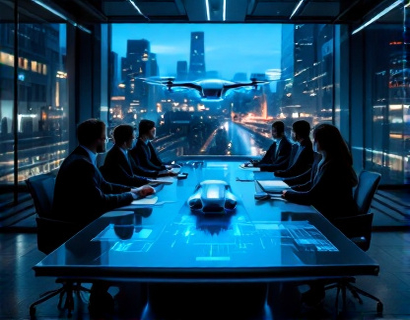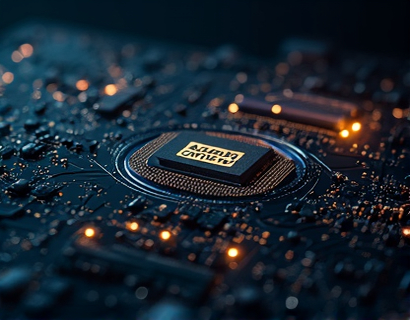Aerospace Technology Advancements: Enhancing Efficiency and Safety for Industry Leaders
The aerospace industry stands at the forefront of technological innovation, driven by the relentless pursuit of efficiency, safety, and performance. Recent advancements have revolutionized both aviation and space exploration, offering industry professionals and visionaries a glimpse into a future where the boundaries of what is possible continue to expand. This article delves into the latest technological breakthroughs that are shaping the aerospace landscape, providing a comprehensive overview for those at the helm of this dynamic field.
Advancements in Aerodynamic Design
One of the most significant areas of improvement in aerospace technology is aerodynamic design. Modern computational fluid dynamics (CFD) tools enable engineers to simulate and optimize airflow around aircraft with unprecedented precision. These simulations help reduce drag, improve fuel efficiency, and enhance overall performance. For instance, the use of adaptive wing technologies, which adjust their shape in response to flight conditions, has shown promising results in reducing fuel consumption and increasing lift-to-drag ratios. Such innovations not only lower operational costs but also contribute to a more sustainable aviation industry.
Materials Science Innovations
Advancements in materials science have played a crucial role in enhancing the efficiency and safety of aerospace vehicles. The development of lightweight yet strong composite materials, such as carbon fiber reinforced polymers (CFRP), has transformed aircraft structures. These materials offer superior strength-to-weight ratios compared to traditional aluminum alloys, leading to significant weight reductions and improved fuel efficiency. Additionally, the use of advanced alloys and nanomaterials is enhancing the durability and resistance to environmental factors, thereby extending the lifespan of aerospace components and reducing maintenance costs.
Propulsion System Improvements
Propulsion systems are a critical component of aerospace vehicles, and recent advancements have focused on increasing efficiency and reducing emissions. Hybrid and electric propulsion technologies are gaining traction, offering the potential for quieter, more environmentally friendly aircraft. For example, electric propulsion systems can significantly reduce fuel consumption and operational costs, especially for short-haul flights. Moreover, the development of more efficient jet engines, such as those with geared turbofans, has led to better fuel economy and lower noise levels. These advancements not only enhance performance but also align with global efforts to reduce the environmental impact of aviation.
Avionics and Flight Control Systems
The integration of advanced avionics and flight control systems is revolutionizing the way aircraft are operated and maintained. Modern flight decks are equipped with sophisticated glass cockpits that provide pilots with real-time data and enhanced situational awareness. These systems utilize high-resolution displays and intuitive interfaces to streamline pilot interactions, reducing cognitive load and improving decision-making. Additionally, the implementation of fly-by-wire technology, which replaces mechanical flight controls with electronic systems, has enhanced stability and control, making flights safer and more efficient. Autonomous flight capabilities are also being developed, promising to further reduce human error and increase operational efficiency.
Safety Enhancements
Safety remains a paramount concern in the aerospace industry, and technological advancements continue to address this critical aspect. Advanced sensors and monitoring systems are now standard in both commercial and military aircraft, providing real-time data on structural integrity, engine performance, and environmental conditions. These systems can detect potential issues before they become critical, allowing for proactive maintenance and reducing the risk of failures. Furthermore, the use of artificial intelligence (AI) and machine learning algorithms in predictive maintenance has shown great promise, enabling more accurate forecasts and timely interventions. Enhanced crashworthiness through the use of advanced materials and design techniques also contributes to overall safety.
Space Exploration Innovations
In the realm of space exploration, technological advancements are pushing the boundaries of what is possible. Reusable rocket technologies, such as those developed by leading aerospace companies, are dramatically reducing the cost of access to space. The ability to land and reuse rocket boosters has transformed launch operations, making space missions more frequent and economically viable. Additionally, advancements in propulsion systems, such as ion drives and nuclear thermal propulsion, are enabling longer-duration missions and more efficient travel to distant destinations. Robotic exploration vehicles equipped with advanced sensors and AI are conducting detailed surveys of celestial bodies, paving the way for future human missions.
Sustainable Space Practices
As space exploration becomes more prevalent, the focus on sustainability is growing. Efforts to minimize space debris and develop eco-friendly propulsion systems are critical for the long-term viability of space activities. Innovations in debris removal technologies, such as nets and harpoons, are being explored to clean up existing debris in orbit. Moreover, the development of green propellants that reduce toxic emissions is aligning with global environmental standards. These sustainable practices ensure that the expansion of space activities does not come at the expense of the space environment.
Integration of Digital Twins
The concept of digital twins is transforming how aerospace companies design, test, and operate their vehicles. A digital twin is a virtual replica of a physical asset, allowing for detailed simulation and analysis throughout the lifecycle of the aircraft or spacecraft. This technology enables engineers to test various scenarios, optimize performance, and identify potential issues before they occur in the physical world. Digital twins also facilitate real-time monitoring and data-driven decision-making, enhancing both efficiency and safety. By leveraging the insights gained from digital twins, industry leaders can accelerate innovation and maintain a competitive edge.
Cybersecurity in Aerospace
With the increasing reliance on connected systems and data exchange, cybersecurity has become a critical concern in the aerospace industry. Advanced security protocols and encryption methods are essential to protect sensitive information and ensure the integrity of flight systems. Aerospace companies are investing in robust cybersecurity frameworks to safeguard against potential threats, including cyberattacks and data breaches. The integration of AI and machine learning in cybersecurity solutions is enhancing the ability to detect and respond to threats in real-time, providing an additional layer of protection for critical aerospace assets.
Conclusion
The aerospace industry is at a pivotal moment, driven by technological advancements that are redefining efficiency and safety. From aerodynamic innovations and materials science breakthroughs to propulsion system improvements and the integration of digital technologies, the future of aerospace engineering is bright. As industry leaders continue to push the boundaries of what is possible, the focus on sustainability and safety ensures that progress is not only rapid but also responsible. Embracing these advancements will be crucial for those looking to stay ahead in this rapidly evolving field.










































